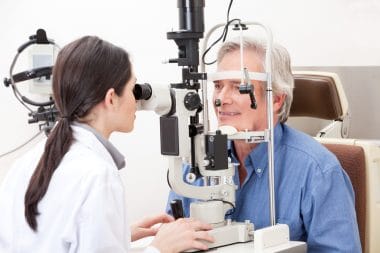Cataracts, you may understand this to be a clouding of the eye that impairs or destroys vision. You may have heard about the surgeries that correct the condition. But did you know that not all cataracts are the same?
There are actually three primary types of cataract related to age: Nuclear Sclerotic, Cortical, and Posterior Subcapsular; the most common of these three is Nuclear Sclerotic cataracts.

Nuclear sclerotic cataracts are most typically age related and the symptoms may take years before they actually affect sight. Treatment for this condition would be to remove the affected lens and replace it with an artificial lens. Modern artificial lenses may even be bifocal type lenses.

This condition scatters the light entering the eye and causing blurred vision, and glare, as well as difficulties in judging contrast and depth perception. Again, this condition may be corrected with surgery to replace the affected lens with an artificial lens. Persons with diabetes are most likely to be affected by this type of cataract.
Persons developing a Posterior Subcapsular cataract may begin to notice a glare or halo effect around lights and may also notice they are having difficulty reading. Persons taking steroids, or that have diabetes, or persons who suffer from extreme nearsightedness and/or retinitis pigmentosa, may develop this type of cataract.

- Blurred or doubled vision
- Colors appear faded
- Seeing halos around lights
- Glare or light sensitivity
- Poor night vision

- Eye injuries or head trauma
- Smoking
- Corticosteroids, major tranquilizers and diuretics
- Alcohol abuse
Also doing certain things may help reduce your risks of developing a cataract, things such as wearing quality sunglasses when outside, whether the sun is bright or not you are still expose to UV radiation.Eating healthy is very important, it is suggested that vitamin C and A are beneficial to the eyes
Treatments for cataracts may be as simple as a stronger eyeglass prescription or eye drops, to the more complex solution of surgery. Surgery is typically performed on an outpatient basis and often persons are home the same day. Your optometrist will determine what treatment is right for you.







